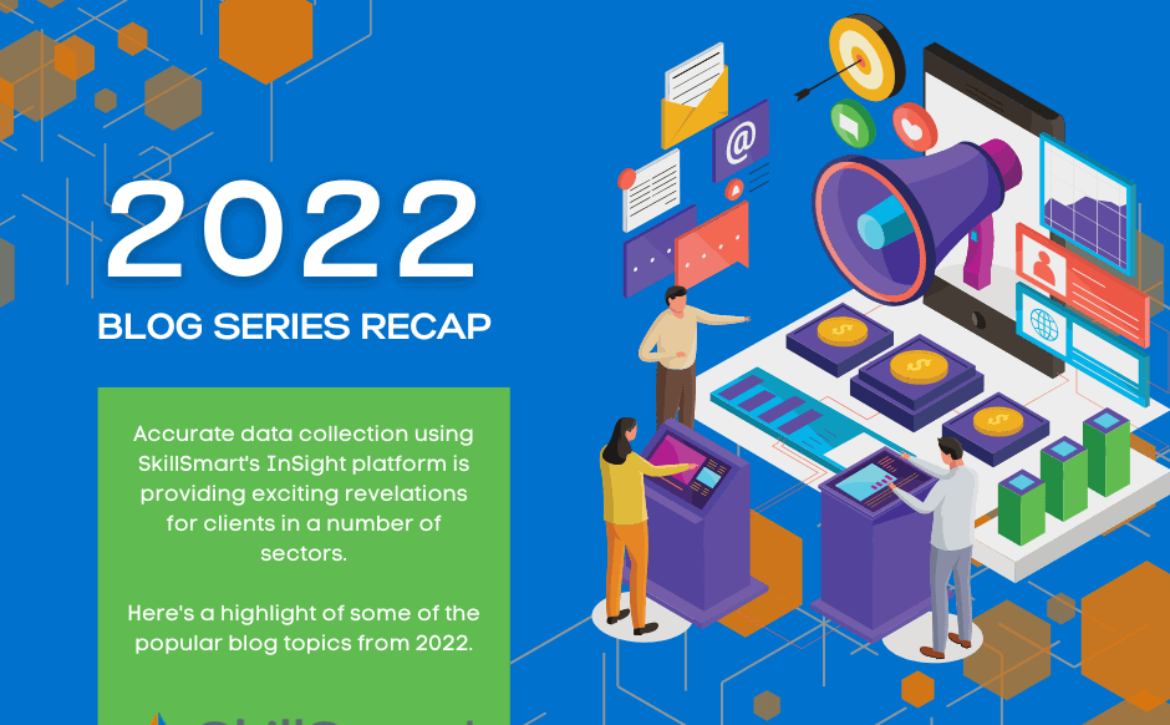1. Is there project size or contract size requirement to use this technology tracking platform?
When purchasing construction data tracking software, you will want to make sure that it will fit whatever size project or contract you have (especially if you purchase InSight at the enterprise level). Some projects may be massive, while others are on the smaller side. There is no limit to how small or large a project and/or contract can be for SkillSmart InSight technology to successfully track and report. Even if one project needs to track individual component parts, such as Design & Construction, that can easily be done. Multiple contracts for one subcontractor are no problem either. Let the technology do the work for you.
2. Can you track all of the subcontractors working on my project to limit my exposure and liability? How many tiers can you track?
You should expect your software to capture data that can help and protect you. We can track an unlimited number of tiers. Many projects now require that all subcontractors performing any work on site appear in the goal and report tracking data. Most current software on the market only tracks the first tier or two. InSight allows you to track as many tiers as you need for each project. All users receive technical support from SkillSmart’s help team – no extra fees for extra time. All your data, in one place.
3. Can your technology track a project’s diversity & inclusion requirements? If so, can you track workforce hours and wages in addition to the businesses, contractors, and suppliers (WBE, MBE, Small, Veteran, Section 3, Local, etc.)?
InSIght is one platform that provides you a source for all the required and needed data. Having one system for everyone to report workforce hours and wages, along with business spend (MBE, WBE, DBE, Section 3, Veteran, etc.) spend, is crucial in successfully implementing software for your development projects. And just as the requirements change from project to project, InSight can be configured to meet the reporting requirements, including those for local, state, and federal jurisdictions.
4. Do you have ability to set and track specific custom goals?
There are no ‘one-size-fits-all’ set of goals for construction projects as most of them have unique and specific goals based on a number of factors. InSight empowers you to set and track project-specific goals as well as contractor-specific goals. We understand that contractor-specific goals are crucial in accomplishing your overall project goals.
You can set and track workforce goals (Minority Hours, Female Hours, Local, Apprentice: Journeymen Ratio) and business goals (MBE, WBE, DBE, SBE, Section 3, Veteran, Local etc.). You can also hold subcontractors to customized goals because you know they have the capacity, or not, to meet that goal. When purchasing software for tracking purposes, be sure that you can align the tracking to the goals you would like to meet and the story you would like to tell.
5. What happens if a project lasts longer than the initial contract?
Flexibility is important in pricing, especially in the construction industry where projects often have schedule changes. Many software companies will force you to sign up on a yearly basis towards the end of the project, whether you need the product for one month or all twelve months. With SkillSmart, your subscription can be paid monthly or annually. If you go beyond the initial contract, you will simply pay your same monthly subscription fee until your project ends.
6. Are there restrictions or extra charges on getting your data out of the system?
No. SkillSmart doesn’t hold your data hostage or make you pay to retrieve it. We’ve heard that problem before from those that use our competitors. The inability to retrieve all of the data that you have been continuously entering and tracking over the life of a project. SkillSmart DOES NOT hold your data hostage or make you pay to retrieve it. With technology and reporting requirements continually changing, you need a flexible system that can support you through the entire process. Data is always accessible, easily exportable with a few clicks. SkillSmart has automated the most common data downloads and makes them available to all users. Regular reporting needs required by the project can also be automated, making them available with one click. SkillSmart also provides reasonably priced custom reports with a quick turnaround.
7. If I need to collect specific documentation from the contractors on each project, can I customize the documents I need to manage on each project?
Yes. InSight empowers you to customize your document management feature for each project. Don’t get stuck in the trap of having to use many different tools or software for each piece of functionality you need. Not only can you track your projects and manage your goals, but you can also customize reports and collect your documents for each project. On past projects, InSight’s Custom Upload feature has been used to store, upload and report on items like: Lien Waivers, required business filings, non-cash fringe, insurance, employee specific docs & more.
8. How does the software ensure the data is being entered by the subcontractors?
With so many subcontractors working within the software, it’s important to make sure that everyone is entering their data and can be notified when their data is missing. InSIght has numerous configurable and customizable onscreen and email notifications from the subcontractor user all the way up to the Admin users. To ensure the data is being captured, InSight provides a series of Standard Reports to determine what data has been reported and more importantly who has still yet to enter their data.
Technology has proven to benefit many industries by creating efficiencies for the project teams. It’s now time for the construction industry to embrace technology and get more boots on the site and out of the trailer.
9. How quickly can your software be implemented and configured for my project so that I can begin capturing data?
This is a ‘must ask’ question. We have heard of implementation timelines taking months and years, not days and weeks as would be expected. We can have your site configured for you within a week of the beginning of your subscription so that you can begin capturing data from the project as soon as you need it.
If you are interested in learning more about InSight technology and how this technology supports DE&I and labor compliance tracking across a variety of sectors, click here.
Learn More








